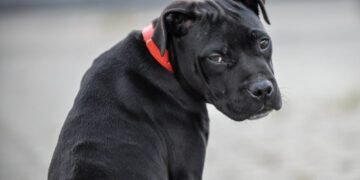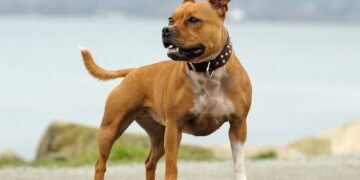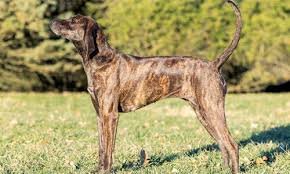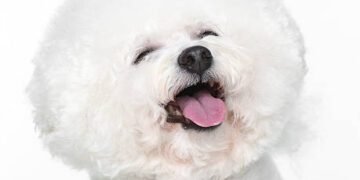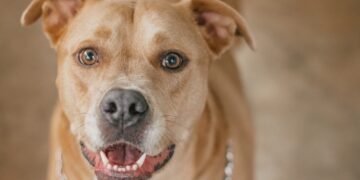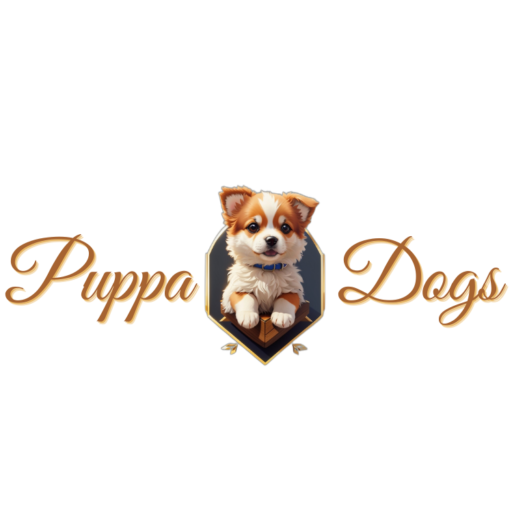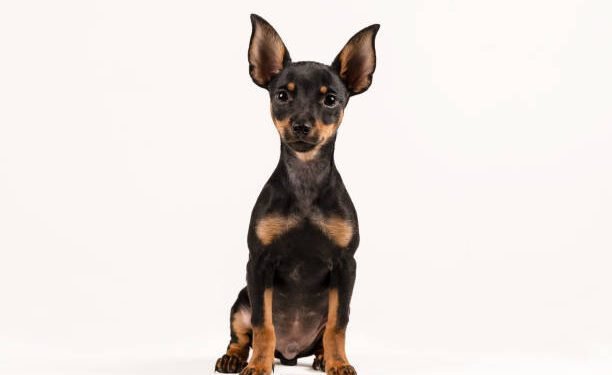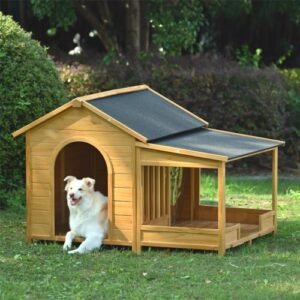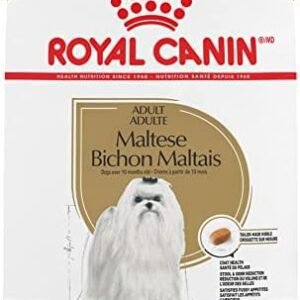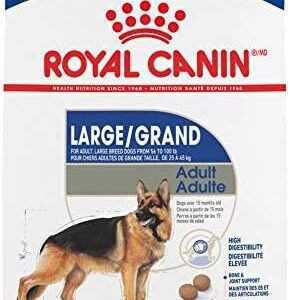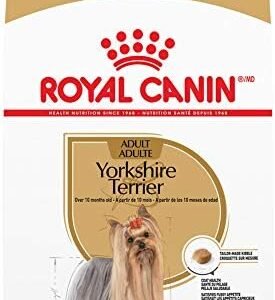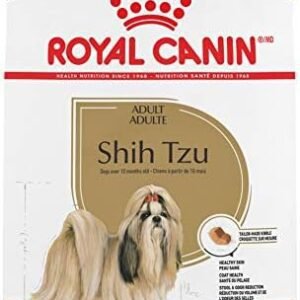Introduction:
The Miniature Pinscher, often affectionately referred to as the “Min Pin,” is a dog breed that embodies a unique blend of charm, elegance, and boundless energy. As we embark on this exploration of the Miniature Pinscher, you’ll discover what sets this breed apart and why choosing the right canine companion is essential for a harmonious life together.
The world of dog ownership is a diverse one, with breeds varying significantly in size, temperament, and needs. Selecting a dog breed that aligns with your lifestyle is a critical decision. It influences not only your experience as a dog owner but also the dog’s well-being. The Miniature Pinscher is a breed that can bring joy and excitement to your life, provided you understand their characteristics and are prepared to meet their specific requirements.

Now, let’s delve deeper into the Miniature Pinscher breed by examining essential details in the table below:
| Field | Information about the Miniature Pinscher |
|---|---|
| Height | 10 to 12.5 inches |
| Weight | 8 to 12 pounds |
| Life Span | 12 to 16 years |
| Good with | Families, Singles, Active Individuals |
| Temperament | Spirited, Energetic, Intelligent |
| Intelligence | High |
| Shedding Amount | Low to Moderate |
| Grooming | Minimal Brushing, Occasional Bathing |
| Exercise Needs | High |
| Energy Level | Very High |
| Barking Level | Moderate |
| Drool Amount | Minimal |
| Coat Length/Texture | Short, Smooth |
| Colors | Various, Most Commonly Red |
| Patterns | Solid Color |
Understanding these characteristics is key to providing the Miniature Pinscher with the care and attention they deserve. Their small stature, high energy level, and spirited temperament make them a breed suitable for active families and individuals. Now, let’s further explore the world of Miniature Pinschers.
Table of Contents
Continue to the next section…
2. Breed History and Origin
Exploring Their Roots:
The history of the Miniature Pinscher is a captivating journey that takes us back to its origins in Germany. This small but dynamic breed shares some similarities with the better-known Doberman Pinscher, but it is, in fact, a distinct breed with a unique heritage.
The Miniature Pinscher, often nicknamed the “Min Pin,” has a lineage that traces back several centuries. Its development can be linked to various breeds that contributed to its distinctive characteristics. While the exact ancestry of the Miniature Pinscher may not be definitively documented, it is believed to have roots in the German Pinscher, Dachshund, Italian Greyhound, and possibly the shorthaired terriers.
Notable Traits:
One of the most notable features of the Miniature Pinscher is its small stature combined with a robust and elegant build. This breed typically stands between 10 to 12.5 inches in height and weighs around 8 to 12 pounds. Their small size doesn’t diminish their spirited personality or confident demeanor, which has earned them the title of “King of Toys.”
Relevance of Origin:
Understanding the origin of the Miniature Pinscher is crucial in appreciating its unique characteristics today. These dogs were initially bred to serve as excellent hunters of small prey. Their agility, energy, and alertness made them valuable companions in the hunt. Over time, their role shifted, and they became treasured as spirited and loyal family pets.
The Miniature Pinscher’s German heritage and the blend of various breeds in its ancestry have resulted in a breed that is both elegant and energetic. Their ability to adapt to different roles, from hunting to a cherished household companion, showcases their versatility and resilience.
As we continue our exploration of the Miniature Pinscher breed, we’ll delve into more aspects that make them a fascinating choice for dog enthusiasts.
Continue to the next section…
3. Understanding the Miniature Pinscher Breed’s Traits
Physical Characteristics:
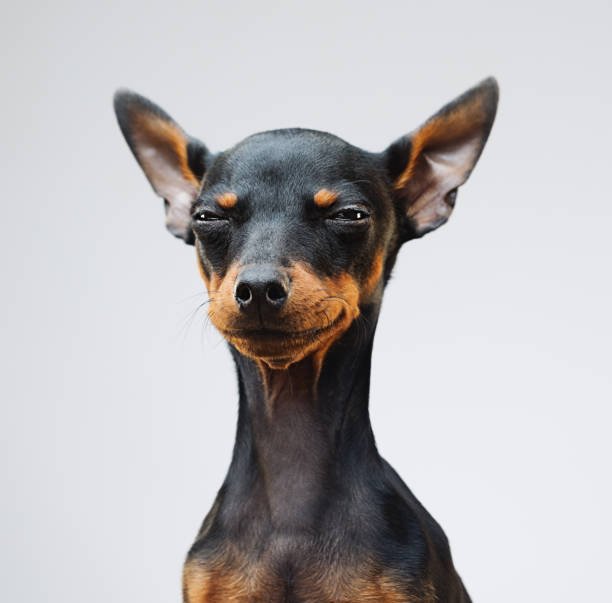
The Miniature Pinscher, often affectionately referred to as the “Min Pin,” boasts a distinctive set of physical attributes that set them apart. Here’s a detailed breakdown of their physical traits:
Size and Proportions: Miniature Pinschers are a small breed, standing at a height of 10 to 12.5 inches and weighing between 8 to 12 pounds. Despite their small size, they exhibit a robust and elegant build with well-proportioned bodies.
Appearance and Coat Color: Miniature Pinschers are known for their sleek and elegant appearance. Their short, smooth coat comes in a variety of colors, with the most common being a prominent shade of red. Other accepted coat colors include black, chocolate, blue, and fawn. Solid colors are typical, and while they may have some tan markings, they are usually minimal.
Distinctive Features: One of the most striking features of the Miniature Pinscher is their alert expression and erect, pointed ears. Their eyes are bright and expressive, conveying their lively and spirited nature. The tail is usually docked, creating a balanced look.
Temperament Overview:
The Miniature Pinscher’s temperament is a harmonious blend of intelligence, confidence, and energy. Understanding their suitability as family pets and their unique personality traits is crucial:
Suitability as Family Pets: Miniature Pinschers can make excellent family pets, especially for active families or individuals. Their playful and spirited nature is a source of joy and entertainment. However, their small size makes them more suitable for families with older children who can handle their energy.
Interaction with Children and Other Pets: Miniature Pinschers are typically good with children, particularly if they have been properly socialized from an early age. However, their energetic nature can be overwhelming for very young children. They tend to be territorial and may exhibit protective behavior, making them cautious around unfamiliar dogs. Proper socialization can help them get along with other pets.
Environmental Needs: While Miniature Pinschers can adapt to various living environments, they thrive in active households where they can participate in regular exercise and play. They are well-suited to apartment living as long as their exercise requirements are met. Due to their short coat, they may be sensitive to extreme cold, so providing warmth is essential in colder climates.
Common Behavioral Traits:
Understanding the behavioral traits of the Miniature Pinscher is essential to provide the right care and address any challenges. Here’s a closer look at some of their common behavioral traits:
Playful and Energetic: Miniature Pinschers are known for their boundless energy. They are playful and enjoy activities that engage both their body and mind. Interactive playtime and puzzle toys are great options to keep them mentally stimulated.
Intelligent: This breed is highly intelligent, which means they are quick learners. However, their intelligence can also lead to a bit of stubbornness. Consistent and positive reinforcement-based training is essential to harness their smarts effectively.
Protective Instincts: Miniature Pinschers often exhibit protective instincts. They make excellent watchdogs due to their alert nature. However, this can sometimes translate into barking at perceived threats. Proper socialization can help minimize excessive barking.
- Territorial Behavior: These dogs can be territorial and may exhibit a tendency to guard their home and family. While this can be a positive trait, early socialization is crucial to ensure they are comfortable with visitors and other dogs.
Understanding these traits will help you provide the right environment and training to ensure a harmonious and happy relationship with your Miniature Pinscher.
Continue to the next section…
4. Training and Exercise
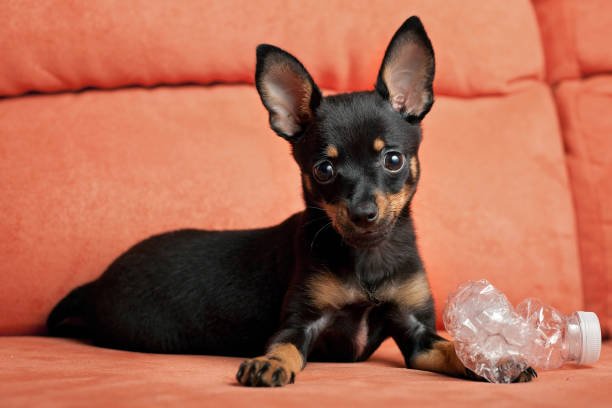
Effective Training Methods:
Training a Miniature Pinscher can be a rewarding experience, given their high intelligence. However, it’s important to use effective training methods that align with their unique characteristics:
Positive Reinforcement: Miniature Pinschers respond exceptionally well to positive reinforcement techniques. This includes rewarding good behavior with treats, praise, and affection. Avoid harsh training methods as they can be counterproductive and may lead to stubbornness.
Consistency: Consistency in training is key. Establish clear rules and boundaries from the beginning and stick to them. This helps them understand what is expected of them.
Socialization: Early socialization is essential. Expose your Miniature Pinscher to a variety of people, animals, and environments from a young age. This helps them become well-adjusted and less prone to fear or aggression in unfamiliar situations.
- Obedience Training: Obedience training is important to ensure your Miniature Pinscher responds to basic commands. Commands like sit, stay, and come are fundamental for their safety and your peace of mind.
Exercise Requirements:
Miniature Pinschers are an active breed, and they have specific exercise needs that should be met for their well-being:
Physical Exercise: These dogs require regular physical activity to burn off their energy. Daily walks, playtime, and opportunities to run in a safe, enclosed area are essential.
Mental Stimulation: In addition to physical exercise, Miniature Pinschers benefit from mental stimulation. Puzzle toys, interactive games, and training sessions keep their minds engaged
Challenges in Training:
Miniature Pinschers are highly intelligent, which can sometimes lead to stubbornness and a desire to do things their way. They may test boundaries or try to outsmart their owners. Consistent and patient training is necessary to overcome these challenges.
Tips for Success:
Here are some tips to ensure successful training and exercise for your Miniature Pinscher:
Start Early: Begin training and socialization from a young age. Puppies are more receptive to learning and adapting to new experiences.
Be Patient: While they are intelligent, Miniature Pinschers can be independent. Be patient and use positive reinforcement to motivate them.
Exercise Regularly: Meeting their exercise needs is essential for a well-behaved Miniature Pinscher. Aim for at least 30 minutes to an hour of exercise each day.
- Keep Training Fun: Make training sessions enjoyable and engaging. Use treats, toys, and praise to keep them motivated.
By following these training and exercise guidelines, you can ensure that your Miniature Pinscher is not only well-behaved but also mentally and physically fulfilled.
Continue to the next section…
5. Health Considerations
Common Health Issues:
Like all breeds, Miniature Pinschers may be prone to certain health issues. It’s important to be aware of these conditions and to monitor your dog’s health regularly. Common health concerns for Miniature Pinschers include:
Patellar Luxation: This condition involves the dislocation of the kneecap, which can cause lameness and discomfort.
Hip Dysplasia: Hip dysplasia is a genetic condition where the hip joint doesn’t develop properly, leading to arthritis and pain.
Progressive Retinal Atrophy: This is a hereditary condition that can lead to vision loss over time.
Legg-Calve-Perthes Disease: This condition affects the hip joint, leading to a reduction in blood supply and the eventual degeneration of the joint.
Heart Problems: Miniature Pinschers can be prone to certain heart conditions, so regular cardiac check-ups are important.
Regular Veterinary Check-ups:
To maintain your Miniature Pinscher’s well-being, regular veterinary check-ups are crucial. These check-ups allow the vet to monitor your dog’s health, catch potential issues early, and provide appropriate treatments or interventions when needed. Make sure to stay up to date on vaccinations, parasite control, and dental care.
Diet and Exercise:
A balanced diet and regular exercise play a significant role in your Miniature Pinscher’s overall health. Ensure that your dog receives a high-quality dog food appropriate for their age, size, and activity level. Watch their calorie intake to prevent obesity, as this breed can be prone to weight gain.
Exercise is not only essential for mental stimulation but also for maintaining a healthy weight and strong muscles. Regular physical activity helps prevent joint issues and keeps your Miniature Pinscher in top shape.
Preventive Measures:
Taking preventive measures can go a long way in keeping your Miniature Pinscher healthy:
Regular Dental Care: Dental hygiene is important, as dental issues can lead to more severe health problems. Brush your dog’s teeth regularly and consider dental chews or toys.
Weight Management: Keep your Miniature Pinscher at a healthy weight to reduce the risk of joint problems. Monitor their calorie intake and provide opportunities for exercise.
Eye Care: If your dog is at risk for progressive retinal atrophy, regular eye check-ups are essential to monitor their vision.
- Heart Health: If your Miniature Pinscher is susceptible to heart issues, work with your veterinarian to develop a plan for monitoring and managing their cardiac health.
By staying informed about potential health concerns, scheduling regular vet visits, and providing proper care, you can help ensure a long and healthy life for your Miniature Pinscher.
Continue to the next section…
6. Grooming and Care
Coat Maintenance:
Miniature Pinschers have a short, smooth coat that is relatively low-maintenance. Here are some grooming tips to keep their coat in excellent condition:
Regular Brushing: While their coat is short, regular brushing helps remove loose hair and keeps their skin healthy. Use a soft-bristle brush to prevent damage to their fine coat.
Occasional Bathing: Miniature Pinschers typically do not require frequent baths unless they get exceptionally dirty. Bathing them every few months or as needed is usually sufficient.
Nail Trimming: Keep their nails trimmed to a comfortable length. Overgrown nails can cause discomfort and affect their gait. If you’re not comfortable doing this yourself, consult a professional groomer or your veterinarian.
- Dental Care: Dental hygiene is essential. Brush your Miniature Pinscher’s teeth regularly to prevent plaque buildup and maintain healthy gums.
Overall Care Tips:
Here are some general care tips to ensure the well-being and happiness of your Miniature Pinscher:
Proper Nutrition: Feed them a well-balanced diet that meets their specific nutritional needs. Consult with your veterinarian for recommendations.
Exercise and Mental Stimulation: Fulfill their exercise requirements and engage their minds with playtime and interactive toys.
Regular Vet Check-ups: Schedule regular veterinary check-ups to monitor their health and address any issues promptly.
- Socialization: Socialize your Miniature Pinscher from a young age to ensure they are comfortable in various situations and around other people and animals.
By following these grooming and care tips, you can ensure that your Miniature Pinscher remains healthy, happy, and comfortable in your home.
.
7. Popularity and Recognition
Current Popularity:
The Miniature Pinscher, affectionately known as the “Min Pin,” maintains a certain level of popularity and remains a beloved breed among dog enthusiasts. While it may not be as widespread as some other breeds, the Miniature Pinscher has a dedicated fan base due to its unique combination of spirited personality, elegance, and small size. Their lively and energetic nature appeals to those who enjoy active and engaging companions.
It’s important to note that the popularity of dog breeds can vary by region and over time. Trends in ownership and popularity can be influenced by various factors, including lifestyle changes, media exposure, and the breed’s suitability for different living situations. As of my knowledge cutoff date in January 2022, the Miniature Pinscher continues to find its place in the hearts of those who appreciate its distinctive traits and spirited charm.
Breed Recognition:
The Miniature Pinscher is recognized by several major kennel clubs and breed organizations. Recognition by these organizations is important as it provides a standardized breed standard and promotes responsible breeding practices. Key kennel clubs and organizations that officially recognize the Miniature Pinscher include:
American Kennel Club (AKC): The AKC recognizes the Miniature Pinscher as a member of the Toy Group.
The Kennel Club (UK): In the United Kingdom, the Miniature Pinscher is recognized by The Kennel Club and is categorized within the Toy Group.
Canadian Kennel Club (CKC): The CKC also acknowledges the Miniature Pinscher within the Toy Group.
Fédération Cynologique Internationale (FCI): On an international level, the FCI recognizes the Miniature Pinscher as well.
United Kennel Club (UKC): The UKC categorizes the Miniature Pinscher under the Companion Dog Group.
These organizations establish breed standards, which outline the ideal physical and temperament characteristics for Miniature Pinschers. Conforming to these standards ensures that the breed’s integrity is maintained and that breeders strive to produce dogs with these traits.
Notable Breed Varieties:
The Miniature Pinscher is a distinct breed, but there can be variations within the breed due to factors such as breeding lines, regional differences, and individual breeders’ preferences. While these variations are not officially recognized as separate “varieties” of Miniature Pinschers, they can sometimes be identified based on unique traits or breeding goals. Some examples include:
Standard vs. Miniature Size: While the Miniature Pinscher is already a small breed, there can be variations in size. Some breeders may focus on breeding Miniature Pinschers at the smaller end of the size range, while others may prefer a slightly larger variation.
Coat Colors and Patterns: Miniature Pinschers come in a variety of coat colors and patterns. While solid red is the most common, you can find Miniature Pinschers with black, chocolate, blue, or fawn coats. Some may have tan markings, while others have minimal markings.
Show vs. Working Lines: In some cases, breeders may focus on specific lines of Miniature Pinschers for show or work. Show lines may emphasize certain physical traits and temperament for the conformation ring, while working lines may prioritize qualities for activities such as obedience or agility.
These variations, while not officially recognized as distinct varieties by kennel clubs, offer choices for prospective Miniature Pinscher owners based on individual preferences for size, color, and temperament traits.
As you consider bringing a Miniature Pinscher into your life, understanding the breed’s popularity and the recognition it receives from kennel clubs and organizations is valuable. Whether you’re interested in a specific variety of Miniature Pinscher or simply a loving companion with the breed’s spirited personality, the Miniature Pinscher can be a wonderful addition to your family or as an individual pet.
Please note that trends and popularity in dog breeds can change over time, so it’s advisable to seek the latest information from breed clubs and kennel clubs to ensure you make an informed decision when choosing a Miniature Pinscher as your canine companion.
6. Grooming and Care (continued):
Lifespan and Longevity:
On average, Miniature Pinschers have a lifespan of 12 to 16 years, making them a relatively long-lived breed. To promote a longer and healthier life for your Miniature Pinscher, consider the following tips:
Balanced Diet: Ensure that your dog receives a balanced and nutritious diet tailored to their age, size, and activity level. Avoid overfeeding, as obesity can lead to various health issues, including joint problems and heart disease.
Regular Exercise: Maintain a consistent exercise routine to keep your Miniature Pinscher physically and mentally stimulated. Regular exercise can help prevent weight gain and joint issues, leading to a longer, healthier life.
Vet Check-ups: Schedule regular check-ups with your veterinarian to monitor your dog’s health, catch any potential issues early, and receive guidance on vaccinations and preventive care.
Disease Prevention: Stay up to date with vaccinations, parasite control, and heartworm prevention as recommended by your vet. Preventive measures can significantly contribute to your dog’s longevity.
Stress Reduction: Minimize stress in your dog’s life. Avoid exposing them to unnecessarily stressful situations, and provide a safe and comfortable environment.
Oral Hygiene: Maintain your Miniature Pinscher’s dental health by brushing their teeth regularly and providing dental chews or toys. Good oral hygiene can prevent dental issues that could affect their overall well-being.
By following these tips and maintaining a vigilant approach to your Miniature Pinscher’s health, you can help them enjoy a longer, happier life as a cherished member of your family.
8. Exercise and Activity Recommendations for Miniature Pinschers
Exercise Plan:
Miniature Pinschers are a highly active breed with boundless energy, and they thrive on regular exercise and physical activity. Here’s a detailed exercise plan to help keep your Miniature Pinscher happy, healthy, and well-behaved:
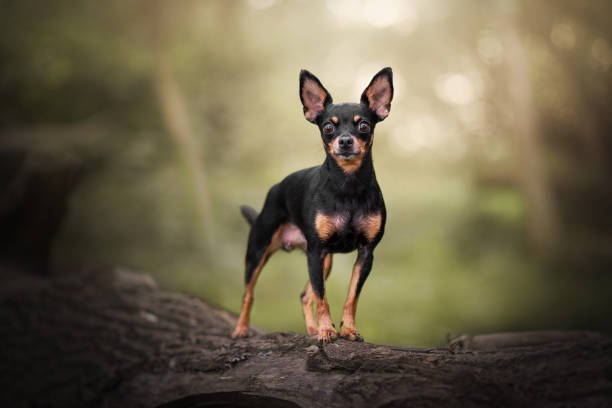
Daily Walks: Provide your Miniature Pinscher with at least one or two daily walks. These walks should be brisk and engaging, allowing them to explore their surroundings and burn off excess energy. A typical walk duration should be around 30 minutes to an hour, depending on your dog’s age and fitness level.
Playtime: Incorporate interactive play sessions into your daily routine. Miniature Pinschers enjoy games like fetch, tug-of-war, and agility exercises. Engaging in playtime not only fulfills their exercise needs but also stimulates their intelligent minds.
Mental Stimulation: In addition to physical exercise, Miniature Pinschers benefit from mental stimulation. Puzzle toys, treat-dispensing toys, and obedience training provide mental challenges that are equally important for their well-being. These activities help prevent boredom and destructive behavior.
Running Opportunities: If possible, provide opportunities for your Miniature Pinscher to run freely in a secure and enclosed area. Their high energy levels can be better released in a safe space where they can sprint and play to their heart’s content.
Agility Training: Consider agility training or obstacle courses for your Miniature Pinscher. This breed excels in agility due to their intelligence and agility. It’s not only great exercise but also a way to strengthen the bond between you and your dog.
Breed-Specific Exercise Needs:
While Miniature Pinschers don’t have any specific breed activities like water sports or herding, they do well in activities that challenge their agility, intelligence, and speed. Keep in mind the following breed-specific exercise needs:
Mental Engagement: This breed thrives on mental challenges. Incorporate puzzles and training sessions into their routine. Miniature Pinschers enjoy figuring out problems and learning new tricks.
Interactive Play: As they are known for their playfulness, interactive play is vital. Engage in games that stimulate their problem-solving abilities and allow them to use their natural instincts.
Regular Exercise: Ensure consistent exercise as a part of your daily routine. Miniature Pinschers need a lot of activity, and regular exercise is crucial to maintaining their health and happiness.
Warmth in Cold Climates: Due to their short coat, be mindful of extreme cold weather. If you live in a colder climate, provide your Miniature Pinscher with appropriate clothing or warmth during outdoor activities.
Monitor Heat Sensitivity: Conversely, watch out for extreme heat. Miniature Pinschers are sensitive to high temperatures, and overheating can be a concern. Avoid strenuous exercise during hot weather.
In summary, Miniature Pinschers require a combination of physical and mental exercise to keep them content and well-behaved. Their active nature and intelligence make them suitable for various activities, from brisk walks to agility training. A well-rounded exercise routine will not only ensure their physical health but also strengthen the bond between you and your Miniature Pinscher.
By following these exercise and activity recommendations, you can provide your Miniature Pinscher with the stimulating and enjoyable life they need to thrive.
9. Nutrition and Feeding Guidelines
Proper nutrition is a cornerstone of maintaining your Miniature Pinscher’s health and vitality. Understanding their specific dietary needs, feeding schedule, and potential dietary restrictions or allergies is crucial. Here’s a comprehensive guide to feeding your Miniature Pinscher:
1. Dietary Recommendations:
Miniature Pinschers are a small and active breed, and their nutritional needs can vary depending on their age, activity level, and overall health. Here are some key dietary recommendations to consider:
High-Quality Dog Food: Choose a high-quality dog food that is appropriate for small breeds. Look for options that list a quality protein source (such as chicken or beef) as the primary ingredient.
Protein Content: Miniature Pinschers benefit from a diet with moderate to high protein content to support their muscle maintenance and overall energy levels.
Healthy Fats: Incorporate healthy fats, such as omega-3 and omega-6 fatty acids, for maintaining a glossy coat and healthy skin. These fats also support their overall well-being.
Balanced Nutrients: Ensure that the dog food provides a balanced mix of essential nutrients, including vitamins and minerals. Check for options that meet the standards set by the Association of American Feed Control Officials (AAFCO).
Age-Appropriate Food: Consider your Miniature Pinscher’s age. Puppies, adult dogs, and seniors have different nutritional requirements. Choose food that corresponds to their life stage.
2. Feeding Schedule:
Establishing a consistent feeding schedule is essential for your Miniature Pinscher. Here’s a suggested feeding schedule based on age:
Puppies (8 weeks to 6 months): Puppies require more frequent feeding to support their growth and development. Offer 3 to 4 meals per day.
Adults (6 months to 8 years): Transition to 2 meals per day. Most Miniature Pinschers do well with this feeding schedule, but you can adjust based on their preference.
Seniors (8 years and older): Senior dogs may require special dietary considerations. Consult with your veterinarian to determine the best feeding schedule and diet for your older Miniature Pinscher.
3. Portion Control:
Portion control is essential to prevent overfeeding and maintain a healthy weight for your Miniature Pinscher. Guidelines on the dog food packaging can provide a starting point, but individual needs may vary. Monitor your dog’s weight and adjust portion sizes as needed.
Here are some general guidelines:
Monitor Body Condition: Keep an eye on your Miniature Pinscher’s body condition. You should be able to feel their ribs without them being visible. If they gain excess weight, reduce their food portions.
Avoid Free Feeding: Refrain from free-feeding, where food is constantly available. Measured portions at specific meal times are more effective in managing their diet.
Consult Your Veterinarian: If you’re unsure about the appropriate portion sizes or if your Miniature Pinscher has specific dietary needs, consult your veterinarian. They can provide personalized recommendations.
4. Dietary Restrictions and Allergies:
Miniature Pinschers, like all dogs, can have dietary restrictions or allergies. Common allergens include wheat, corn, soy, and specific proteins. If you suspect your Miniature Pinscher has food allergies or sensitivities, look for grain-free or hypoallergenic dog foods. Consult your veterinarian for allergy testing and guidance on selecting appropriate dog food.
5. Water Intake:
Ensure your Miniature Pinscher has access to fresh, clean water at all times. Proper hydration is essential for digestion and overall health. Monitor their water intake, especially during hot weather or after vigorous exercise, to prevent dehydration.
In summary, providing the right nutrition for your Miniature Pinscher is essential for their health and well-being. Choose high-quality dog food that aligns with their age and activity level, establish a consistent feeding schedule, practice portion control, and be mindful of any dietary restrictions or allergies. By prioritizing their nutrition, you’ll help your Miniature Pinscher thrive and enjoy a happy, healthy life.
10. Personal Stories and Testimonials
Real-life experiences from Miniature Pinscher owners can provide valuable insights into the joys and challenges of sharing your life with this spirited breed. Let’s take a look at some personal stories and testimonials to gain a deeper understanding of what it’s like to own a Miniature Pinscher:
1. Maria’s Miniature Pinscher Tale:
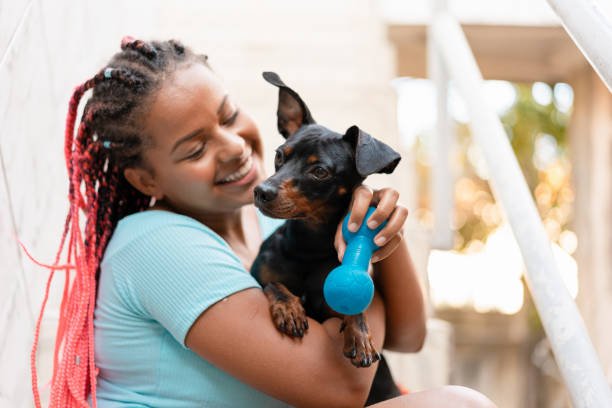
Maria, a proud owner of a Miniature Pinscher named Rocky, shares her experience:
Rocky is the best decision I’ve ever made. He’s a bundle of energy, always ready to play and brighten up my day. His intelligence never ceases to amaze me. With a bit of patience and positive reinforcement, he quickly learned to follow commands. Of course, he has his mischievous moments, but they only add to his charm.
As a single person with an active lifestyle, Rocky is the perfect companion. We go on daily runs and weekend hikes, and he’s my dedicated exercise partner. While he can be protective of our home, he’s also incredibly sweet and loyal. Rocky’s presence has brought so much joy into my life.
2. The Sutton Family’s Miniature Pinscher Adventure:
The Sutton family, with two young children, welcomed a Miniature Pinscher into their home and have this to say:
Our Miniature Pinscher, Bella, has become an integral part of our family. She’s energetic and playful, which our kids absolutely love. We were initially concerned about her interacting with our children, but with early socialization, she’s developed a deep bond with them.
Bella’s alert nature makes us feel safe at home, and her little protective barks let us know if something’s amiss. We’ve found that exercise is the key to a happy Bella. We enjoy daily walks and play sessions in the yard to keep her content and well-behaved.
3. Emma’s Miniature Pinscher Journey:

Emma, a Miniature Pinscher enthusiast, reflects on her experiences:
I’ve been a Miniature Pinscher fan for years, and I’ve had the pleasure of sharing my life with two of these incredible dogs. They are spirited, intelligent, and a constant source of entertainment. Both my Min Pins, Max and Daisy, had their unique personalities. Max was the mischievous one, always looking for opportunities to play tricks on us, while Daisy was the more loyal and watchful one.
I’d recommend this breed to anyone who enjoys an active lifestyle and appreciates the companionship of a spirited and intelligent canine friend.
8. The Cost of Owning a Miniature Pinscher
Owning any dog breed comes with various expenses, and it’s essential to budget for these needs to provide the best care for your Miniature Pinscher. Here’s a breakdown of the costs associated with Miniature Pinscher ownership:
A. Upfront Costs:
Adoption or Purchase: Acquiring a Miniature Pinscher can involve an adoption fee from a rescue organization or a purchase price from a breeder. Adoption fees typically range from $50 to $300, while the cost of a puppy from a reputable breeder can range from $800 to $2,500 or more.
Spaying/Neutering: If your Miniature Pinscher is not already spayed or neutered, this procedure typically costs between $150 and $300.
Initial Vaccinations and Microchipping: Your puppy will requirevaccinations, including distemper, parvovirus, and rabies. These vaccines can cost around $75 to $100. Microchipping costs about $45 to $50.
- Basic Supplies: You’ll need essential supplies like a collar, leash, food and water bowls, a crate, bedding, toys, and grooming tools. These items can total around $100 to $200.
B. Ongoing Expenses:
Food: High-quality dog food tailored to your Miniature Pinscher’s age and size is vital. Monthly food costs range from $20 to $50, depending on the brand and dietary needs.
Routine Veterinary Care: Regular check-ups and vaccinations are necessary to maintain your dog’s health. Expect to spend around $200 to $400 annually.
Preventative Medications: Flea and tick prevention, heartworm medication, and routine deworming will cost approximately $100 to $200 annually.
Grooming: While Miniature Pinschers have low-maintenance coats, you may need to budget for occasional professional grooming or bathing costs, typically around $50 to $100 per session.
Training and Socialization: Enrolling in obedience classes or puppy socialization can be a one-time expense, ranging from $50 to $150. Training treats and toys are ongoing expenses.
Toys and Accessories: Miniature Pinschers are playful, so you’ll need to replace toys periodically. Budget around $10 to $20 per month.
Pet Insurance: While optional, pet insurance can provide peace of mind in case of unexpected health issues. Monthly premiums vary but typically range from $30 to $50.
Other Miscellaneous Costs: Budget for unforeseen expenses like emergency vet visits, pet sitting or boarding fees, and license or registration fees.
It’s important to note that these costs can vary based on factors such as your location, your dog’s age, and their specific needs. By budgeting for these expenses and providing your Miniature Pinscher with proper care, you can ensure a happy and healthy life together.
Conclusion
In conclusion, the Miniature Pinscher, often affectionately referred to as the “Min Pin,” is a captivating and spirited breed that brings boundless energy and unique charm to the lives of those who choose them as companions. This article has delved into various aspects of Miniature Pinscher ownership, including their history, physical characteristics, temperament, training, health considerations, grooming, and the costs associated with caring for these lively dogs.
Whether you’re a single individual seeking a spirited and loyal companion or a family looking for a playful and alert watchdog, the Miniature Pinscher has the potential to become an essential part of your life. By understanding their specific needs and providing proper care, training, and attention, you can forge a harmonious and rewarding bond with your Miniature Pinscher.
Remember that Miniature Pinschers thrive in active and engaging environments. Their enthusiasm and intelligence make them wonderful pets for those who can keep up with their energetic personalities. So, as you embark on the journey of Miniature Pinscher ownership, be prepared to enjoy a life full of joy, laughter, and unconditional love with your spirited canine friend.
11. Grooming and Care
Grooming Essentials:
Grooming your Miniature Pinscher is an essential part of their care routine. While they have a short, smooth coat that requires minimal maintenance compared to long-haired breeds, there are still some key grooming aspects to consider:
Regular Brushing: Even though their coat is short, it’s a good practice to brush your Miniature Pinscher regularly. A soft-bristle brush or a grooming mitt can help remove loose hair and distribute natural oils, keeping their coat in good condition. Brushing also promotes healthy skin and prevents matting.
Bathing: Miniature Pinschers generally don’t require frequent baths unless they get exceptionally dirty. Overbathing can strip their skin of natural oils. Aim for a bath every few months or as needed. Use a dog-specific shampoo, and ensure thorough rinsing to prevent skin irritation.
Nail Trimming: Keeping your dog’s nails at an appropriate length is important for their comfort and mobility. Overgrown nails can cause pain and affect their gait. If you’re not comfortable trimming their nails yourself, consult a professional groomer or your veterinarian for assistance.
Ear Cleaning: Regular ear cleaning can help prevent ear infections. Gently clean their ears with a dog-specific ear cleaner and a soft cloth or cotton ball. Be cautious not to insert anything deep into the ear canal.
Dental Care: Dental hygiene is crucial for your Miniature Pinscher. Brush their teeth regularly using a dog toothbrush and toothpaste designed for dogs. Dental chews or toys can also help reduce plaque buildup.
Accessories and Care Products:
To make grooming and care more effective and enjoyable for both you and your Miniature Pinscher, consider these accessories and care products tailored to the breed’s needs:
Grooming Tools: Invest in a soft-bristle brush, grooming mitt, or a rubber curry brush to make brushing your dog more comfortable and efficient. These tools help remove loose hair and stimulate their skin.
Harnesses: Miniature Pinschers can be prone to tracheal issues, so using a harness rather than a collar can be beneficial. Harnesses distribute pressure more evenly and reduce the risk of injury to the neck.
Toys: Interactive toys and puzzle feeders are great for mental stimulation and keeping your Miniature Pinscher engaged. These toys challenge their intelligence and provide hours of entertainment.
Doggie Dental Products: Dental chews, toys, and dog-specific toothpaste can assist in maintaining good oral health for your pup.
Dog Shampoo and Conditioner: Opt for high-quality dog shampoos and conditioners that are gentle on their skin and coat. Look for products that suit your Miniature Pinscher’s specific needs.
By incorporating these grooming tools, accessories, and care products into your Miniature Pinscher’s routine, you can ensure they remain comfortable, healthy, and happy in your home.
In conclusion, Miniature Pinschers are lively, spirited, and intelligent dogs that bring joy and energy to the right families and individuals. Their unique appearance and protective nature make them beloved companions. To fully enjoy the company of a Miniature Pinscher, provide them with the care, training, and attention they need to lead a happy and healthy life. Proper grooming and regular care are essential elements in ensuring their well-being. With the right tools and knowledge, you can keep your Miniature Pinscher looking and feeling their best, strengthening the bond between you and your spirited four-legged friend.
12.Choosing and Adopting a Miniature Pinscher Dog Breed:
The decision to adopt a dog is a significant one, and when choosing a Miniature Pinscher, there are several key factors to consider. This section will guide you through the process of selecting, adopting, and ensuring the well-being of your new furry family member.
Reasons for Adoption:
Adopting a Miniature Pinscher or any dog from a rescue or shelter is a compassionate choice that comes with various benefits:
Saving Lives: By adopting, you provide a loving home to a dog in need. Many Miniature Pinschers end up in shelters or rescues due to various reasons, and your adoption can be life-saving.
Second Chances: You give a second chance to a dog that may have had a challenging past. Miniature Pinschers are known for their loyalty and devotion, and they often form strong bonds with their new families.
Cost-Effective: Adoption from a shelter or rescue is often more cost-effective than purchasing a puppy from a breeder. It typically includes vaccinations, spaying/neutering, and sometimes even microchipping.
Research and Preparation:
Before adopting a Miniature Pinscher, it’s essential to be well-prepared for their breed-specific needs. Here’s how you can get ready:
Learn About the Breed: Research the breed thoroughly to understand its characteristics, exercise requirements, grooming needs, and temperament. Make sure a Miniature Pinscher is a good match for your lifestyle.
Assess Your Living Situation: Consider your living situation, whether it’s an apartment, house, or another type of dwelling. Ensure it’s suitable for a Miniature Pinscher and has the necessary space and safety measures.
Financial Responsibilities: Be aware of the financial responsibilities associated with dog ownership. This includes food, grooming, regular vet check-ups, and potential emergency medical expenses.
Adoption Process:
Adopting a Miniature Pinscher typically involves a few essential steps. The exact process may vary depending on the shelter or rescue organization, but here are the general steps involved:
Research and Contact: Start by researching local shelters, rescue organizations, or breed-specific rescues that have Miniature Pinschers available for adoption. Reach out to these organizations to express your interest.
Application: You will be required to fill out an adoption application, which helps the shelter or rescue understand your living situation, experience with dogs, and why you want to adopt a Miniature Pinscher.
Home Visit: In some cases, the organization may conduct a home visit to ensure that your living environment is suitable for a Miniature Pinscher. This step is designed to assess safety and comfort.
Meet the Dogs: You’ll have the opportunity to meet Miniature Pinschers available for adoption. Spend time with them to see if there’s a connection and if their temperament aligns with your expectations.
Adoption Fee: If you find a Miniature Pinscher that’s a good fit for your family, you’ll typically pay an adoption fee. This fee covers the cost of vaccinations, spaying/neutering, and other initial healthcare expenses.
Finalize Adoption: Once the adoption fee is paid, you’ll finalize the adoption paperwork and officially bring your Miniature Pinscher home.
Breeding and Ethical Considerations:

If you are considering a Miniature Pinscher from a breeder rather than adoption, it’s essential to choose a responsible breeder. Here are some key points to consider:
Health Screening: Reputable breeders conduct health screenings on their breeding dogs to ensure that they are free from hereditary health issues. Ask for health clearances for conditions like patellar luxation and progressive retinal atrophy.
Genetic Diversity: Responsible breeders strive to maintain genetic diversity within the breed. This helps reduce the risk of inherited health problems.
Ethical Practices: Ensure that the breeder follows ethical practices and prioritizes the well-being of their dogs over financial gain. They should be transparent about their breeding practices and provide a safe and clean environment for their dogs.
- Avoid Puppy Mills: Avoid purchasing Miniature Pinscher puppies from puppy mills or backyard breeders. These sources often prioritize profit over the health and well-being of the dogs.
Whether you choose to adopt a Miniature Pinscher from a shelter or purchase one from a breeder, the well-being of the dog should always be the top priority. Make an informed and compassionate choice that ensures a loving and fulfilling life for your new canine companion.
13.Frequently Asked Questions (FAQs)
Here are some common questions about the Miniature Pinscher breed, addressing unique topics not covered in the main sections:
Are Miniature Pinschers suitable for apartment living?
- Yes, Miniature Pinschers can adapt well to apartment living, provided their exercise needs are met. Regular walks and playtime are essential to keep them happy and healthy.
Do Miniature Pinschers get along with other pets, like cats?
- With proper socialization, Miniature Pinschers can coexist with other pets, including cats. Early introduction and positive interactions are key to fostering good relationships.
Are Miniature Pinschers good with children?
- Miniature Pinschers can be good with children, especially if they’ve been properly socialized. However, their high energy levels may be better suited for families with older children who can engage in active play.
How often should I brush my Miniature Pinscher’s coat?
- Despite their short coat, regular brushing is beneficial to remove loose hair and maintain their skin’s health. A few times a week is usually sufficient.
What is the lifespan of a Miniature Pinscher?
- The average lifespan of a Miniature Pinscher is 12 to 16 years. With proper care, they can enjoy a long and healthy life.
Do Miniature Pinschers shed a lot?
- Miniature Pinschers are not heavy shedders. Their shedding is considered low to moderate, making them a good choice for individuals with allergies.
How do I train a Miniature Pinscher to stop excessive barking?
- To address excessive barking, use positive reinforcement and consistent training. Reward quiet behavior and teach the “quiet” command. Socialization can also help reduce territorial barking.
Can I groom my Miniature Pinscher at home, or should I seek professional grooming services?
- While basic grooming like brushing and occasional baths can be done at home, you may want to consult a professional groomer or your veterinarian for nail trimming, especially if you’re not comfortable doing it yourself.
What are the key signs of health issues in Miniature Pinschers to watch out for?
- Keep an eye out for signs such as limping or favoring a leg (indicating possible patellar luxation or hip issues), changes in vision (a sign of progressive retinal atrophy), and unusual heart-related symptoms.
- How do I prevent weight gain in my Miniature Pinscher?
- Preventing weight gain involves managing their calorie intake and providing regular exercise. Avoid overfeeding and ensure they get daily physical and mental stimulation to maintain a healthy weight.
These frequently asked questions provide valuable insights into various aspects of caring for and living with a Miniature Pinscher. If you have more questions or need additional information, don’t hesitate to reach out for guidance and support in your journey with this remarkable canine companion.
Recapping the Essential Information:
Throughout this article, we’ve taken a comprehensive look at the Miniature Pinscher breed, affectionately known as the “Min Pin.” This lively and spirited dog breed is known for its unique combination of intelligence, confidence, and boundless energy. Let’s recap the key takeaways:
Physical Characteristics: Miniature Pinschers are small dogs with a height of 10 to 12.5 inches and a weight ranging from 8 to 12 pounds. They exhibit a sleek, elegant appearance with a short, smooth coat that comes in various colors, with red being the most common.
Temperament: These dogs are spirited, playful, and highly intelligent. They are known for their loyalty to their owners and protective instincts, making them excellent watchdogs. However, their energy level and territorial behavior should be managed through proper training and socialization.
Training and Exercise: Effective training methods for Miniature Pinschers involve positive reinforcement, consistency, and early socialization. They have high exercise needs, requiring both physical and mental stimulation to keep them happy and well-behaved.
Health Considerations: Miniature Pinschers may be prone to specific health issues, including patellar luxation, hip dysplasia, progressive retinal atrophy, and heart problems. Regular veterinary check-ups, a balanced diet, and exercise are essential for their overall well-being.
Grooming and Care: Their short coat is relatively low-maintenance, requiring occasional brushing and bathing. Regular nail trimming and dental care are essential. Proper nutrition, exercise, and socialization are key to their well-being.
Responsible Ownership:
Owning a Miniature Pinscher is a commitment that comes with great rewards. Responsible pet ownership involves providing the necessary care, attention, and love for your furry companion. Remember that proper training, exercise, and socialization are crucial to ensure a harmonious relationship with your Min Pin. Their unique personality traits make them an excellent addition to the right family or individual, but it’s important to be prepared to meet their specific needs.
Encourage Adoption:
As you consider adding a Miniature Pinscher to your life, it’s worth exploring adoption options. Many Miniature Pinschers are in need of loving homes through rescue organizations and shelters. By adopting, you provide a home to a dog in need and make a positive impact on their life. You can find resources and information on Miniature Pinscher adoption from reputable rescue organizations and shelters in your area. Additionally, these organizations often have valuable insights into the breed’s characteristics and can help you find the perfect match for your family or lifestyle.
In conclusion, the Miniature Pinscher is a captivating and spirited breed that can enrich your life with their unique charm and lively nature. With responsible ownership, you can create a loving and happy home for your Miniature Pinscher, ensuring a fulfilling life together filled with joy, laughter, and companionship.

